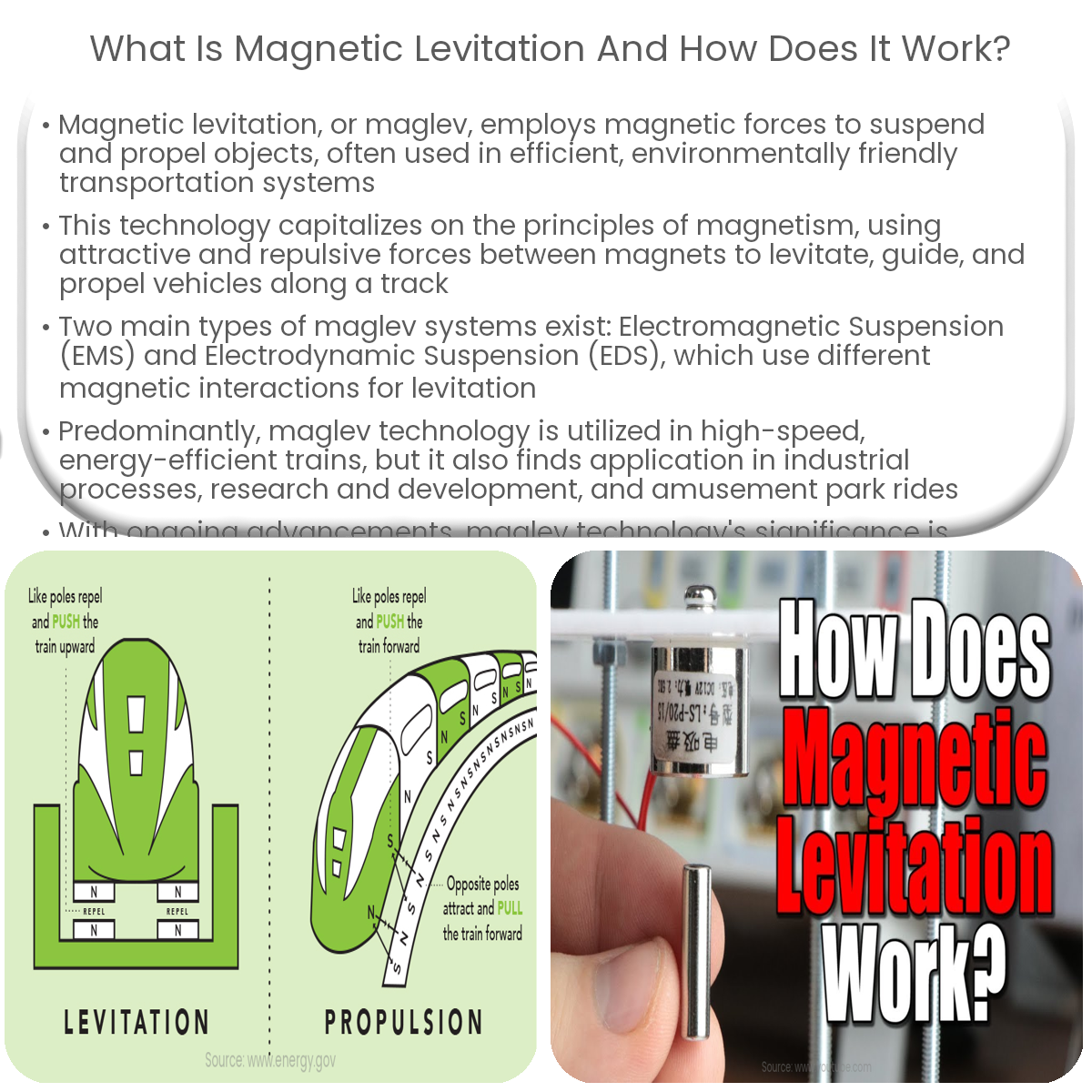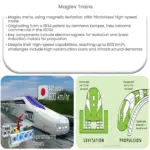Magnetic levitation, or maglev, uses magnetic forces to suspend, guide, and propel objects, often in transportation systems like high-speed trains.
Magnetic Levitation: An Overview
Magnetic levitation, also known as maglev, is a technology that uses magnetic forces to suspend, guide, and propel objects, often in the context of transportation systems. It is a highly efficient and environmentally friendly transportation method, enabling near frictionless movement of vehicles on tracks.
How Magnetic Levitation Works
Magnetic levitation relies on the principles of magnetism, specifically the interaction between two magnetic fields. When two magnets with opposite poles (north and south) are brought close to each other, they attract. Conversely, when two magnets with the same poles (north-north or south-south) are brought together, they repel.
Maglev systems utilize these attractive and repulsive forces to achieve levitation. In maglev transportation, there are two main components: the track and the vehicle. The track contains electromagnets, while the vehicle is equipped with magnets or magnetic materials. By controlling the magnetic fields of these components, the vehicle can be levitated, guided, and propelled along the track.
Types of Magnetic Levitation Systems
- Electromagnetic Suspension (EMS): In EMS systems, the vehicle’s electromagnets are attracted to the track’s ferromagnetic rails. The vehicle is levitated slightly above the track, with sensors and control systems maintaining the gap to prevent contact.
- Electrodynamic Suspension (EDS): EDS systems use superconducting magnets on the vehicle and either a conductive or magnetic track. The interaction between the vehicle’s magnets and the track generates repulsive forces, which lift and propel the vehicle.
Applications of Magnetic Levitation
Maglev technology has a variety of applications, with the most prominent being transportation. Maglev trains, such as the Shanghai Maglev Train and the SCMaglev in Japan, offer high-speed, energy-efficient, and low-maintenance transportation solutions. These trains can reach speeds of over 370 mph (600 km/h) due to the lack of friction between the vehicle and the track.
Other applications of magnetic levitation include industrial processes, such as frictionless bearings and manufacturing systems, as well as research and development in fields like materials science, chemistry, and physics. Additionally, maglev technology is used in amusement park rides and vertical transportation systems, such as elevators.
In conclusion, magnetic levitation is an innovative technology that harnesses the power of magnetic forces to enable efficient, high-speed transportation and other applications. As the technology continues to advance, it is likely to play an increasingly important role in modern society.




